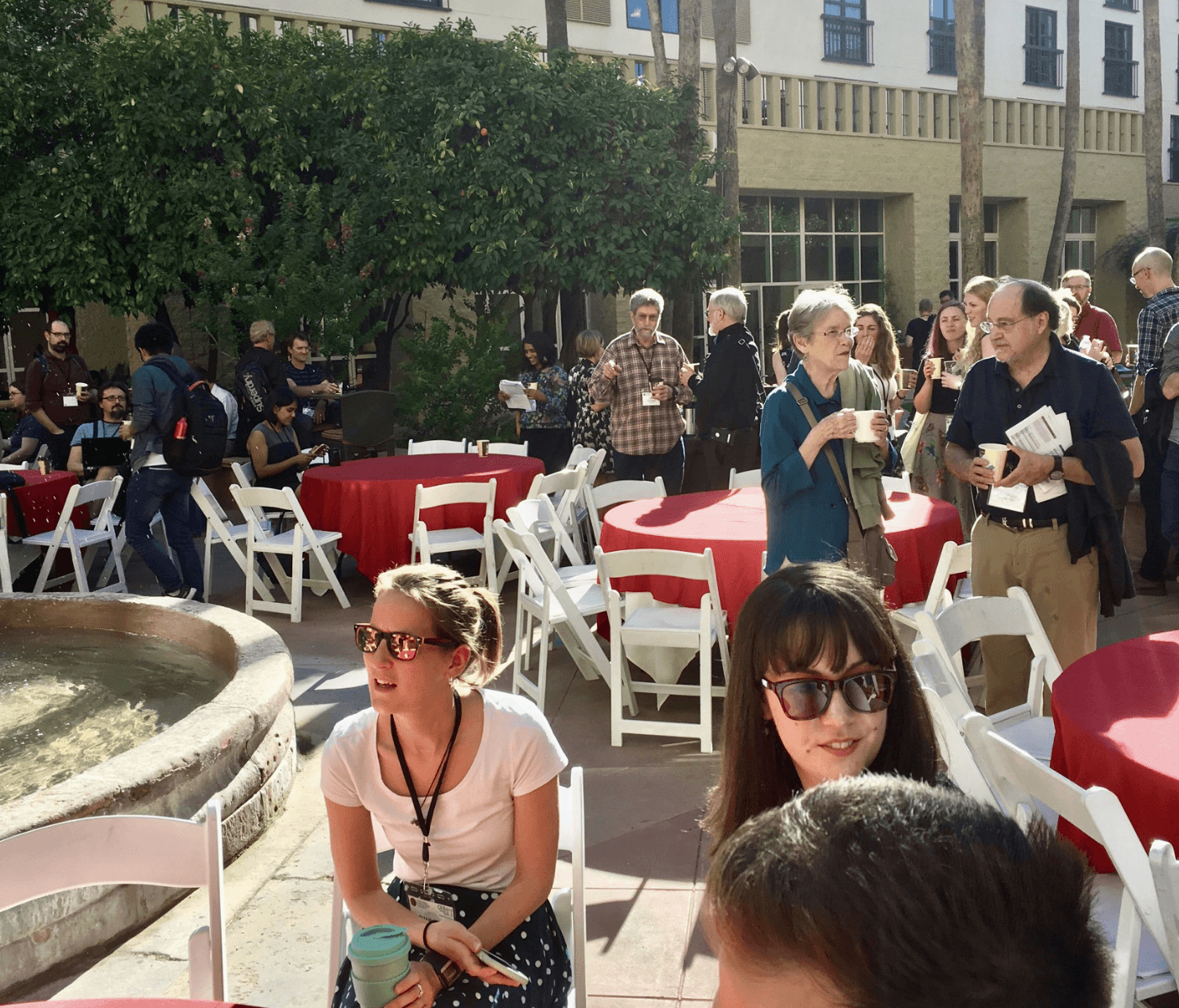Comparative and cross-cultural psychology at CES Tempe

Presentations given at this year’s CES conference in Tempe, Arizona, covered a broad range of fields and subjects. Of most interest to me were the increase in talks regarding non-human research, and the increase in talks on cross-cultural psychological research.
Comparative research was showcased strongly, and went far beyond the chimpanzee-centric, or even primate-centric, approach one might expect at a typical cultural evolution conference. Presentations covered cetacean song revolutions, sea otter tool use, fruit fly mate choice copying, and bird nests. Dr Lucy Aplin gave an excellent plenary covering a wealth of research into the social transmission processes at work amongst wild great tits. Speakers not only presented experimental data, but went beyond this to make novel theoretical arguments illustrated by their study species. Dr Thibaud Gruber presented evidence from moss-sponging chimpanzees in the Budongo forest, and homing pigeons studied by Dora Biro and Takao Sasaki, to argue that complexity may not be the best measure of cumulative cultural evolution. Damien Neadle presented a strong and compelling defence of the zone of latent solutions hypothesis, and put forward a new classification of ‘soft’ or ‘minimal’ culture that may prove useful to many comparative researchers.
The fact that the field is stepping away from (or has at least become aware of the limitations of) its previous focus upon WEIRD human populations* was highlighted early on, with an explicit request that submitted abstracts discussing data from human participants state the national or cultural origins of the sample. As well as highlighting the amount of cross-cultural research at the conference, this request also served to remind us all that study participants from WEIRD societies do themselves come from distinct social and cultural contexts. Eight years after Henrich, Heine and Norenzayan’s seminal Nature paper, the field of cultural evolution appears to be seeing a continuing increase in the amount of research conducted in societies that do not have the five characteristics that define WEIRD societies.
While such research is expected from the fields of anthropology and human behavioural ecology (and indeed both were well represented at the conference), it remains relatively rare to see psychological studies conducted with cross-cultural samples. There was a strong showing in Tempe of cross-cultural developmental studies, with Dr Mark Atkinson presenting evidence of consistency across cultures in children’s use of social information, while Dr Jennifer Clegg showcased a series of studies demonstrating cross-cultural differences in children’s propensity for conformity and adults’ attitudes towards conformist behaviour.
While there were many excellent talks focused on non-human animals, and likewise many focused on non-traditional, non-WEIRD samples (in fact, too many of each to list in this article!), what was more encouraging than the specific content and quality of these talks was the integration of multiple fields under the umbrella of cultural evolution that was achieved at this year’s CES conference. I hope this trend continues in Japan in 2020!
* Western, Educated, Industrialised, Rich, Democratic societies – a term introduced by Henrich, Heine & Norenzayan in 2010.
Henrich, J., Heine, S. J., & Norenzayan, A. (2010). The weirdest people in the world?. Behavioral and brain sciences, 33(2-3), 61-83.
About the author
Rachel is the ESLR Journal Secretary. She is currently a postdoctoral researcher at the University of Lausanne, studying social learning biases in children from a comparative perspective.
If you would like to contact Rachel about contributing to Cultured Scene, she can be reached at journalsec2@eslrsociety.org
